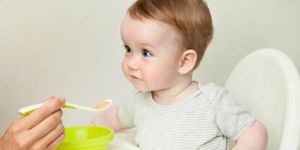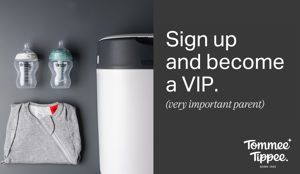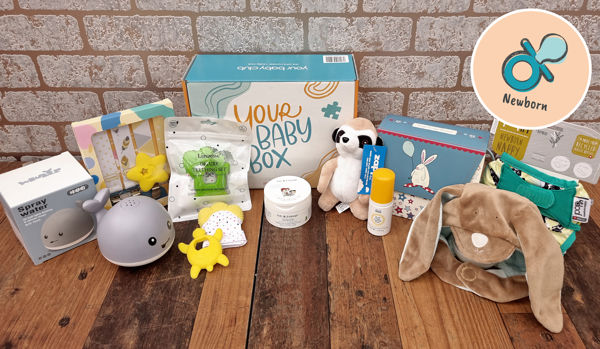I will never forget the day that I was told my son had suspected allergies because as a parent you cannot help but blame yourself and feel guilt for their pain and struggles. After all, you brought them into this world and you’re the one looking after them… The good thing is I wasn’t to blame and I have come to terms with the issues my son has and now we are doing well. Unfortunately having allergies is just one of those things that are out of our control and it is sadly becoming more frequent, especially in babies.
Today I am going to be talking about my experiences as a mother who has a child with allergies. I will be talking about the weaning process, what we looked out for, how I am still getting my son to eat a balanced diet despite his issues with food, as well as outlining what testing is really like for both the child and its parents.
When my son was diagnosed with several severe food allergies in his first year I felt like I was going to have an incredibly difficult time with both the weaning process and our meals for the foreseeable future. With careful consideration and planning ahead however, this hasn’t been the case and I have found it enjoyable to do a lot of home-prepared weaning options as well. Although the medical aspect of allergies can be daunting for both the child and its parents, they need to be performed regularly in order to keep track of how the allergies are progressing as they age. So how did we get to this stage? Let me give you some background to start with.
Your Baby Club and Center Parcs are giving you a chance to win a family break in a Woodland Lodge at a UK Center Parcs village of your choice.
Looking right back to the very beginning when my son was only weeks old and breastfed from day one, we had so many problems and hurdles to get over. He was jaundice hours after birth and we were in the hospital for weeks with him inside a UV incubator. He looked like a mini superhero with nothing but a mask and a nappy on. We soldiered on into breastfeeding which was at first hampered by his illness, then once that was beaten and we went home he was a lazy baby with a poor latch, but we got there in the end. Then to top it all off I contracted an infection called Ductal Thrush. In spite of all these things, we had persevered and I had gotten a great bond going. But then one day all these symptoms began, and I was scared for what it might mean.
Baby A was thought to have developed the milk allergy very early in his life at around his eighth to the tenth week. In order to continue breastfeeding, I would need to immediately give up all dairy products because they were passing through me and into my son. I was devastated that this was happening to us, but I wanted to feed him, and so I made the call to give up dairy. Although it was a struggle for me to alter my entire diet in order to continue breastfeeding I soon got used to it and looking out for products that were harmful to my son became second nature to me.
When it came to weaning my son I did make a lot of effort to make vegetable and fruit purees at home. This was cost-effective by batch cooking it and you can buy little pots and freeze them for other days of the week too. You know exactly what’s in them by doing it this way as well. As I mentioned earlier I had to keep a food diary and this helped me figure out what my son liked and didn’t like as well as helping to keep an eye out for potential allergies. By the end of one month of purees my son was eating three portions a day at breakfast, lunch and dinner and was really enjoying his food. I was on top of my own diet too and I had found many alternatives to dairy products.
But we weren’t out of the woods just yet. Baby A developed further allergies between six months of age and fourteen months of age, the main ones of these included Egg White, Egg Yolk, All Dairy, Soya including the Bean, Flour and Milk. The possibility of various Nuts was also not ruled out yet and we would need to do individual tests for those going forward, as well as repeat tests for his established allergies around every six months. These would determine their severity, for example, Egg yolk was fine during his initial test but not the White, then less than five months later he was tested for both types of egg again and both were positive and at a stronger intolerance. It could change at any time and it was important for us to do regular tests to keep on top of it all.
It’s a scary process for me as his mother because I now worry about everything he eats. I make sure we do eat a balanced diet and that he eats plenty of fruit and vegetables. Luckily he adores fruit and happily eats vegetables in my home-cooked meals. I do enjoy cooking from scratch and we eat a variety of meals such as Cottage Pie, Sausage Casserole, Spanish Chicken and the occasional Chicken and Chips! But I aim to feed him foods that give him the added minerals and vitamins that he would be missing by not eating eggs and dairy. When I was weaning around the time when he started with his other allergies I just kept calm and wrote things down when he had a rash or a reaction. As parents, we just have to deal with whatever happens and try out best to understand despite children not being able to tell us what is wrong at this stage of their life.
Over the last two years, I have realised allergies are very complex and complicated things to deal with. Let’s take one of these allergens, eggs for example. I first gave my son eggs that were scrambled during weaning and within seconds of swallowing them, he was violently sick. I didn’t give any egg to him again and waited for the allergy tests. During these, my son was given a cake with egg baked inside it during a controlled test in hospital, and he tested negative for it, he had no reaction. However any contact with fresh eggs did cause a severe reaction, this was on his skin prick test. This meant that so long as I was breastfeeding him I would also need to give up all Fresh Egg products.
As I understand it, certain things pass through breast milk differently, certain proteins like those found in dairy and in egg are more likely to cause a reaction when they reach a babies stomach. However consuming any of the above things for my son was going to be a huge no, and I had to be careful and read every packaging carefully when I wasn’t preparing foods from scratch. I am able to have soya milk and soya products in moderation, but I cannot consume egg unless baked and no dairy.
Keeping a food diary and making fortnightly main meal plans was how I got through it all. If I knew what I was doing I could work around the allergies my son had, and by planning ahead I could make sure his needs were met for both healthy meals and making sure he got his recommended fruit, vegetables and daily vitamins and minerals. It’s been an interesting couple of years put it that way, and I don’t think I’ve ever been as concerned with what I have been putting into my body as I have done during the past eighteen months say. I now aim for at least five fruit and vegetables a day for myself and my son; we also drink lots of water and not much of anything else. My son only has breast milk or water or oat milk as his liquids. The oat milk was recommended to us by our Paediatric Consultant. My diet will remain as it is for the future, with my son still breastfeeding with little signs of moving away from it despite me offering alternatives. Even when I get an option of trying dairy products again when I no longer feed him from myself, I don’t think I will ever go back to drinking cow’s milk or having much dairy-related produce. My reasons are because I feel much healthier since I swapped to alternative milk; I noticed a difference in my skin too, just like my son did. Before we realised he had his dairy allergy he had very bad eczema that was only under control with doctor prescribed creams. Now we find that we don’t need to use the steroid creams as often as before due to the changes in diet making his skin better. The eczema remains in the form of dry patches that occasionally get sore, they have never fully gone away but it is ninety per cent better than it was a year ago.
When my son reached eighteen months of age our Paediatric consultant wanted us to both start the Milk Ladder together. This was so that we could measure any reactions my son had doing controlled amounts of eating certain foods. It began with a Malted Milk Biscuit. These contain a small amount of skimmed milk powder; in a low concentration that is ideal to test on patients with allergies. My son had half a biscuit a day for a week, same for me too, and his eczema began flaring up on Day 3 of us eating them. He wasn’t sick and he didn’t present with any serious reactions, but he got a rash on his bottom after doing a poo when eating dairy items, and it made his skin sore and dry. We decided to reduce the minimal dairy intake from biscuits to just two days a week, by keeping his body reacting to the dairy hopefully one day it might not any more.
Some children can grow out of their allergies and by keeping Baby A’s body in contact with these allergens, even in the smallest quantities, there is a hope that he might one day grow out of them. We usually have allergy tests scheduled now every five to six months. They repeat all of the skin prick tests so we can understand what is reacting and at what level of severity. I am hopeful that one day he may be able to enjoy more foods, but until that day we will stick with our alternatives and our home cooking. I’m learning more about baking with his allergies too, using fewer eggs and dairy alternatives where possible. Nobody wants to see their child in pain or discomfort and if I can avoid it I will do.
Having a child with so many allergies has been a huge learning curve for me. I have to consider so many things now that I wouldn’t usually. I cannot give Baby A something that I eat, even if he wanted to try it, without checking its ingredients first. Most mums and dads would allow a toddler to take from their plate for example, but occasionally we eat different main meals, and I have to also be aware of cross-contamination. Here is one example, I could be eating a piece of bread, and most of the bread you buy in the supermarket contains Soya Flour as well as Wheat Flour. Therefore if I had something on my plate like a Sandwich with Ham and my son wanted my Ham, he can’t have it if it’s already touched my bread, he is allergic to what the bread is made of. It really makes you think, doesn’t it? I’m used to it, but it was rather daunting, to begin with until it becomes second nature.
Now let me explain a bit about the allergy testing in children and babies. Allergy testing at the hospital was something I could never properly prepare for. The outcomes can vary in children and some require immediate medical assistance, others just need a dose of antihistamines and others have barely a reaction at all. The skin prick test is the easiest way to get fast results with small children; it is usually done on the inside of their forearm. The scariest tests for me were the ones where my son had to consume things. Our most recent one was Peanuts, and luckily he showed no signs of reacting. The child is given the item they are suspected to be allergic to chopped up and placed inside something they enjoy eating. We used a fruit puree to mask the fact he would be eating the crushed up Peanuts. The Peanut Challenge, as it was called, involved the consumption of peanuts doubled every time that no reaction was present. So we started with a quarter, then a half, then a whole, then two nuts, then four nuts – you get the idea! It is all done in a room in the hospital and you have access to a nurse and a doctor too if one is needed. The controlled environment is always necessary in a case like ours where they aren’t sure whether a reaction will happen or not. But thank goodness my son had zero reaction to them, one thing I don’t have to worry about for now! Although it was negative this time he will have to be retested with them at some time in the future.
The skin prick test involves a solution of the allergen or product being placed on to the skin, it’s the size of a droplet, and our nurse said to my son, “Time to pop your bubbles” as she did the testing. The skin beneath the droplet is pricked and gently broken to allow the solution inside. Then the tests on the arm are left untouched for fifteen minutes until a reaction can be noticed. This is usually in the form of a red and itchy bump.

The nurse numbers the test site with sticker strips before she begins; she will also leave one number as a neutral test site usually saltwater so they have something to measure against. The most stressful part for me was trying to stop my son from peeling off the numbered stickers or from trying to itch where he was reacting. The testing itself was not frightening, and nurses have a way of making these things fun for kids anyway, but it was more the outcome that was the scary part. How many sites would react and how badly? You only have fifteen or so minutes to wait until you find that out.
With this type of test, the outcome can be a positive result or negative result. Negatives are always repeated at a later stage to ensure they remain a negative. Any positives can range in severity and this is measured by the reaction on the child’s arm. The reactions are circled with pen and using sticky tape the nurse then transfers their sizes on to the child’s medical notes. It is advised that the reactions that have occurred with certain products mean they should be avoided unless under instruction from a doctor (like we briefly tried with the milk ladder until a reaction occurs).
Because we have dealt with this from an early age I hope that my son won’t be fazed too much about all of his repeat visits to the hospital as he grows older. I have no doubt that some of these allergies might be with us for years and if that is the case I am fully prepared to make all the changes that I need to in order to keep my son safe and healthy.
I hope that as my son gets older things become easier for him and that we might be a bit luckier with these things in the future. I must take this time as well to thank the NHS for everything that they have done for me and my son thus far, it’s difficult right now for everyone and we are just staying calm and making the most of this time together and avoiding anything that might make him unwell so as not to take up any doctors time.
If you need any further information on allergies or are worried that your child is showing symptoms of having an allergy then please contact your healthcare professional or Doctor.











